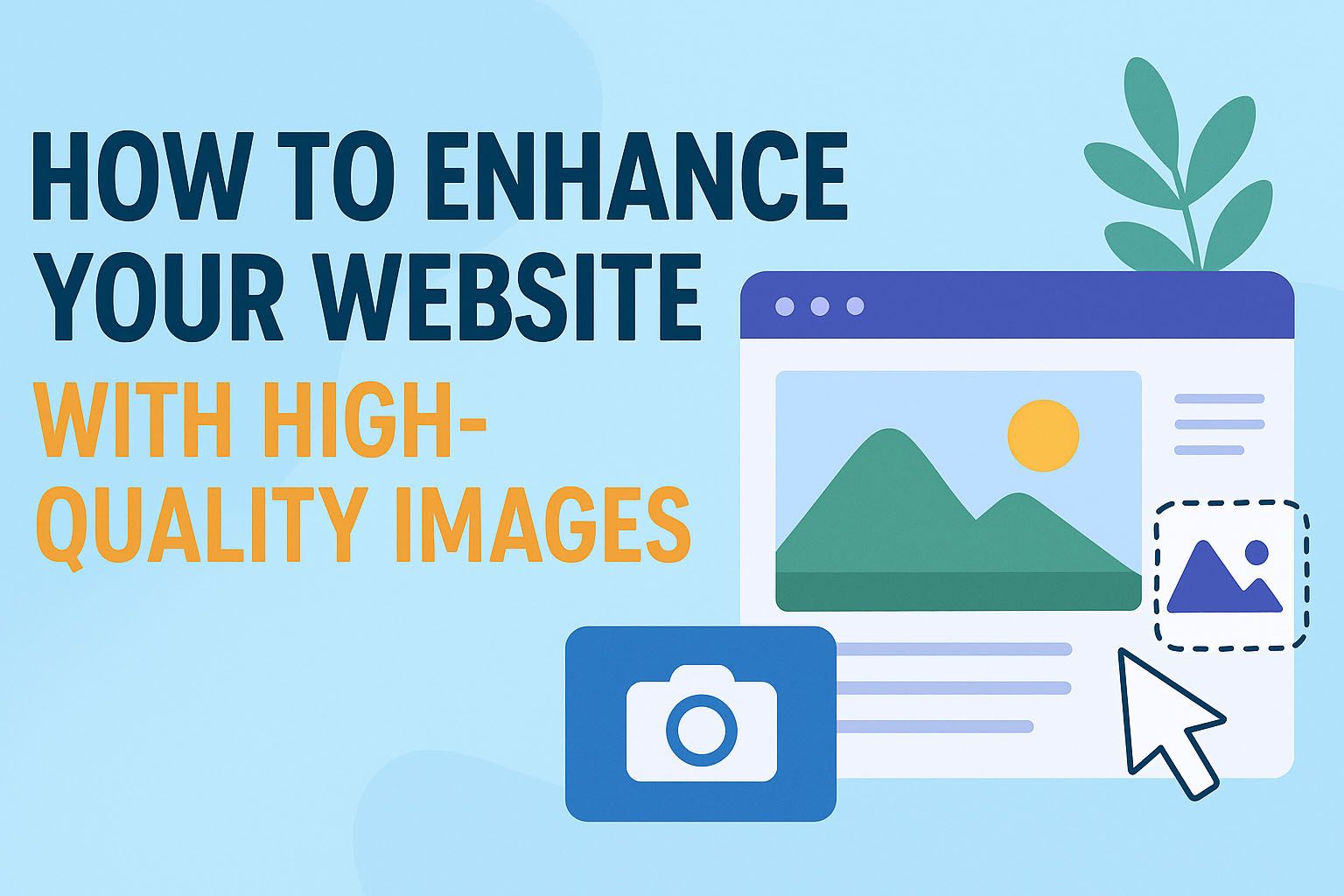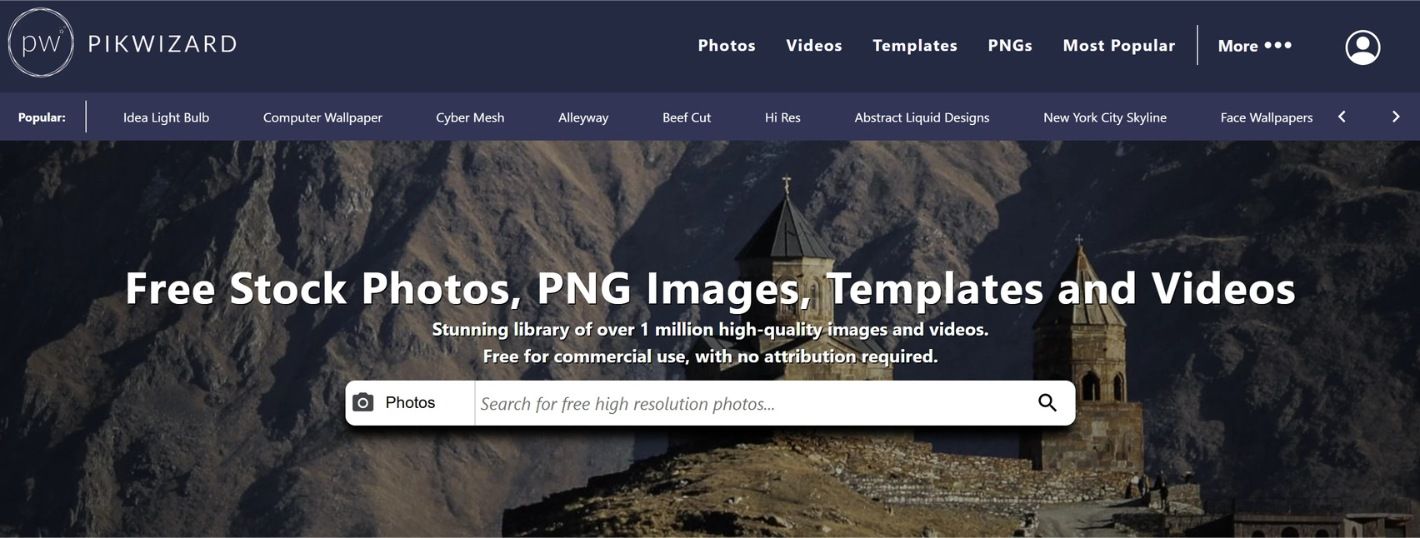
In the digital age, first impressions matter more than ever. When visitors land on your website, the visual appeal is often what keeps them engaged. Whether you’re running an e-commerce site, a blog, or a personal portfolio, high-quality images can be a game changer. But how exactly do you enhance your website with the right images to captivate and retain your audience? Let's dive into a few tips and techniques that will help you elevate your online presence.
1. Understand the Importance of High-Quality Visuals
Free high-quality pictures not only make your website look more professional but also help communicate your message more effectively. A sharp, well-composed photo can convey a feeling or idea far better than text alone. For example, in an online store, the product's image should showcase every detail, while in a blog post, a relevant image can complement the narrative and help break up large blocks of text, making it more digestible.
Moreover, quality visuals improve user experience (UX). Visitors are more likely to stay on your site longer if it looks appealing. High-quality images also signal trustworthiness and professionalism, which is vital for establishing credibility, especially if you’re running a business or offering services.
2. Choose the Right Image Type for Your Website
The first step in using images effectively is to understand the different types of images that can be used on your website. Here’s a breakdown:
-
Hero Images: These are the large, prominent images that appear at the top of your homepage or landing pages. They set the tone for your site, so it’s crucial to choose images that are high-resolution and directly related to your brand’s message.
-
Product Images: If you're running an e-commerce website, product images should be clear and detailed. A blurry or poorly lit photo can turn potential buyers away. Multiple angles and close-ups of your products help visitors understand exactly what they’re getting.
-
Background Images: Subtle, high-quality background images can add depth to your site and make it more visually appealing without being too distracting. The key is to make sure they don’t overpower the content.
-
Infographics and Icons: If you're presenting data or guiding users through processes, high-quality infographics can make your information much more accessible and engaging. Clean, visually attractive icons also play an important role in navigating your website efficiently.
3. Optimize Image Size and Format for Fast Loading
While high-quality images are essential, it’s equally important to ensure that your images load quickly. Slow-loading images can negatively impact user experience and even hurt your site’s SEO rankings. To optimize your images:
-
Resize images to match their display size. There's no need to load a huge image if it’s only displayed as a small thumbnail.
-
Compress images to reduce file size without sacrificing too much quality. Tools like TinyPNG can help in this regard.
-
Use the right file formats: JPEGs are good for photographs, while PNGs work well for images with transparency, and WebP can offer better compression.
4. Utilize Free Stock Photo Resources

You don’t have to hire a professional photographer to get beautiful, high-quality images for your website. There are numerous free stock photo resources available online that provide stunning visuals, many of which don’t require attribution. Websites like https://pikwizard.com/ offer a large collection of free, high-resolution images for any type of website. Whether you need images for blogs, product pages, or social media posts, you’ll find high-quality photos that can elevate your content and keep your site looking fresh.
These platforms provide an easy solution for businesses on a budget, ensuring you can access professional-grade images without breaking the bank. You can filter images by category, color, and orientation, helping you quickly find the perfect photo to complement your website's design.
5. Stay Consistent with Your Image Style
One of the key elements in creating a visually cohesive website is consistency. Choose images that align with your brand’s style and tone. For example, if your brand is elegant and minimalist, opt for clean, simple images with a neutral color palette. If you’re running a creative design agency, vibrant, dynamic images might better represent your ethos.
Having a consistent image style helps visitors recognize your brand, and it also contributes to a more polished, professional appearance. This will keep your visitors focused on your content and less distracted by mismatched visuals.
6. Ensure Mobile-Friendly Images
With the majority of web traffic now coming from mobile devices, it’s crucial that your images are optimized for mobile screens. Make sure your images are responsive, meaning they adjust and resize according to the device being used. This can be easily done by using modern web design techniques like CSS media queries.
Also, check that your images are still high-quality on mobile devices. Blurry or pixelated images can turn users away, so it’s important to test your images on various screen sizes and resolutions.
7. Use Images to Improve Your SEO
Images are not only valuable for their visual appeal; they can also contribute to your website's SEO. Here are a few ways to optimize your images for search engines:
-
Alt Text: Provide descriptive alt text for each image. This helps search engines understand what the image is about and can also improve accessibility for users with visual impairments.
-
File Names: Use relevant keywords in the file name of your images. For example, instead of "IMG1234.jpg," use a descriptive name like "modern-sofa-living-room.jpg."
-
Image Sitemaps: Including images in your sitemap can help search engines index them more effectively.
By optimizing your images for SEO, you improve the chances of your website appearing in search results, especially for image-based queries.
Incorporating high-quality images on your website is one of the most effective ways to boost engagement, enhance user experience, and improve your site’s overall appearance. By carefully selecting the right images, optimizing them for speed and SEO, and ensuring they align with your brand, you can create a visually stunning website that captivates visitors from the moment they arrive. Don’t underestimate the power of visuals—your website’s success could very well depend on it.
